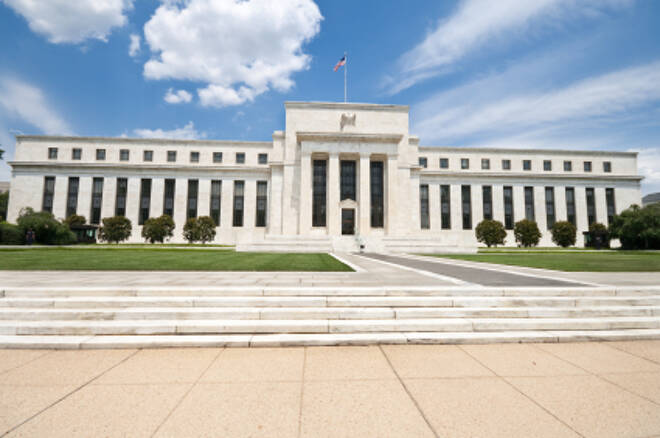Advertisement
Advertisement
Fear of Brexit Forces Central Banks to Remain Dovish
By:
While some investors focused on the possibility Britain would vote to leave the European Union on June 23, others played the short-term volatility fueled
While some investors focused on the possibility Britain would vote to leave the European Union on June 23, others played the short-term volatility fueled by monetary policy statements from the U.S. Federal Reserve, the Bank of Japan, the Bank of England and the Swiss National Bank. Here’s a recap of their monetary policy decisions.
U.S. Federal Reserve
The U.S. Federal Reserve kept its benchmark interest rates unchanged at 0.50 percent after its two-day meeting concluded on Wednesday, June 15. This came as no surprise as investors slashed the probability of a rate hike to near zero on June 3 after the release of a weak jobs report for May.
Fed officials cited the slowing job growth in their statement while only tentatively committing to two more rate hikes this year while providing some indications that there might be only one.
Using a so-called dot plot of future rate projections, the Fed showed there still is a greater likelihood of two moves before the end of 2016, but doubts are increasing. At the April meeting, just one member indicated that the year would end with only one hike. That number jumped to six at the June session.
The Fed’s summary of economic projections also indicated that the funds rate is still projected at 0.9 percent for the end of 2016, which would represent two more quarter-point increases. However, Fed officials lowered their expectations for future years. The central bank is now looking for the Fed funds rate to rise to 1.6 percent in 2017, as opposed to the 1.9 percent estimate in March, and to 2.4 percent in 2018, from a 3.0 percent estimate previously.
The Fed also said that the unemployment rate has declined to 4.7 percent but “job gains have diminished.” Furthermore, the central bank cut its expectations for full-year gross domestic growth, from 2.2 percent at the March meeting to 2.0 percent last week. It did, however, raise its inflation estimates, upping the headline number for 2016 from 1.2 percent to 1.4 percent and the core from 1.6 percent to 1.7 percent.
Overall, the Fed statement was dovish which put pressure on the U.S. Dollar against most major currencies.
Bank of Japan
The Bank of Japan held rates steady on Thursday, June 16, sending the Japanese Yen sharply higher against most major currencies and kindling speculation on whether policymakers would intervene to halt the currency’s rise.
In its monetary policy statement, it said it will continue to conduct money market operations so the monetary base increases at an annual pace of 80 trillion yen ($760 billion) and maintain a negative interest rate of minus 0.1 percent to the policy-rate balances in current accounts held by financial institutions at the bank.
Bank of England
The Bank of England’s Monetary Policy Committee unanimously voted to leave its base interest rate at 0.5%. Along with the decision, the bank once again warned of the dangers of Britain voting to leave the EU, saying the Brexit would affect consumption and investment, push the British Pound downwards, and send growth spiking lower.
The BoE’s dovish statement was bearish for the British Pound, but it took a backseat to the bank’s comments on Brexit. Worries about the referendum on June 23 produced volatile moves in both directions last week.
Swiss National Bank
The recent strengthening of the Swiss Franc didn’t seem to bother Swiss National Bank officials, who decided to leave its negative interest rate policy unchanged on Thursday, June 16. The decision by the SNB suggests that the central bank is out of options since the value of the Franc is being influenced by forces outside of its control. Further cuts in the already deeply negative deposit rate would run the risk of destabilizing the banking system.
The SNB’s decision was perceived as neutral, with last week’s price action largely controlled by flight to safety buying due to uncertainty over a looming referendum on the U.K.’s membership in the European Union.
About the Author
James Hyerczykauthor
James is a Florida-based technical analyst, market researcher, educator and trader with 35+ years of experience. He is an expert in the area of patterns, price and time analysis as it applies to futures, Forex, and stocks.
Latest news and analysis
Advertisement
